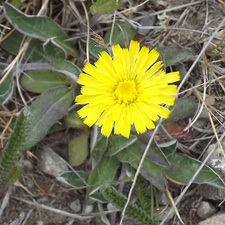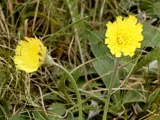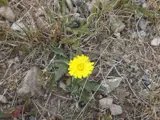 Mouse ear hawkweed
Mouse ear hawkweed
Common name: Mouse ear hawkweed
Botanical name: Pilosella officinarum
Management category: Advisory
Originally from Europe. It was accidentally released into New Zealand and was recorded as naturalised in 1878.
Why is it a pest?
- Grows and matures quickly, producing many moderately long-lived and widely dispersed seeds.
- Creeping, mat-forming habit enables it to tolerate damage, cold temperatures, poor soils and grazing.
- Forms dense mats in low-growing plant communities excluding almost all other species.
Where is it found?
Disturbed shrubland and forest, beech forest, tall and short tussockland, fernland, alpine and volcanic plateau herbfields, bare land, riverbeds and streambanks, and rocky outcrops.
What does it look like?
- Pale lemon-yellow flower heads (October to February), often with a red stripe on the petals.
- Leaves lie flat to the ground and have white edges that are often turned upright with long hairs on the upper surface and felt-like undersides that are covered in dense star-shaped hairs.
- Sap is milky-white.
What are the rules?
Advisory
Council does not enforce the control of advisory species. It is landowner/occupier responsibility to manage these pests. Council may provide advice on how to manage or control advisory species if required.
How do you get rid of it?
- Weedmat – for three months minimum.
- Dig-out (all year) – small patches
- Spray (spring to autumn)
CAUTION: When using any herbicide or pesticide, PLEASE READ THE LABEL THOROUGHLY to ensure that all instructions and directions for the purchase, use and storage of the product, are followed and adhered to.
Read more on pest control advice, information and regulations.
Images


